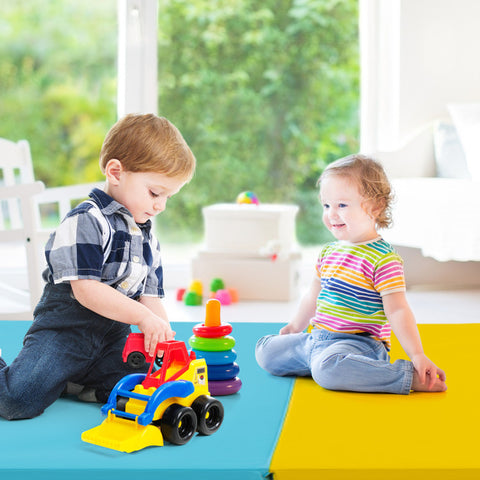News
The Role of Anti-Slip Surfaces in Gymnastics Mats: Why Grip and Safety Matter
When it comes to gymnastics mats, one often overlooked but critical feature is the anti-slip surface. Whether for home use, training centers, or school gyms, the surface grip of a gymnastics mat can significantly affect both performance and injury prevention. In this article, we’ll explore the role of anti-slip surfaces in gymnastics mats, how they improve safety, and what to look for when choosing the right mat. We'll also cover related elements like material type, durability, and user tips for maintenance.

Why Anti-Slip Surfaces Are Essential in Gymnastics Mats
A non-slip gymnastics mat ensures that the mat stays in place during routines and landings. This added stability prevents the mat from sliding on hard floors, which is especially important for high-motion activities like tumbling, cartwheels, and balance drills. Without a proper anti-slip surface, users are at risk of slipping or mislanding—both of which can lead to sprains or more serious injuries.
Types of Anti-Slip Surfaces in Gymnastics Mats
1. Textured Vinyl Covers
Many professional and home gymnastics mats use a textured vinyl layer. This outer layer not only resists moisture and wear but also enhances friction between the mat and the gymnast’s feet or hands.
2. Rubberized Bottoms
Some mats feature rubber backing or anti-slip dots on the underside. These are effective on hardwood, tile, or laminate floors and are commonly used in foldable or panel gymnastics mats.
3. Anti-Slip Coating or Lamination
Higher-end mats sometimes include additional coatings that increase grip. These are especially useful for heavy-duty use or outdoor practice where surfaces may be uneven.
Benefits of Non-Slip Gymnastics Mats
Better Safety During Practice
A secure mat prevents shifting during high-impact landings, reducing the chance of joint strain or twisted ankles. For younger gymnasts or beginners, this added safety is essential.
Improved Performance and Confidence
When athletes know the mat won’t move beneath them, they can focus on form, technique, and rhythm instead of adjusting for balance mid-motion.
Versatility Across Surfaces
Non-slip mats can be used safely on hardwood, tiles, and even outdoors, making them ideal for portable or at-home setups.
Prevention of Wear and Tear
Anti-slip mats don’t rub as much against the floor, which helps preserve both the mat and the surface underneath over time.
Common Use Cases Where Anti-Slip Surfaces Matter
- Home gymnastics and tumbling practice
- PE classes and school gyms
- Yoga and bodyweight workouts
- Toddler play mats
- Martial arts or cheerleading drills
Tips for Choosing the Right Anti-Slip Gymnastics Mat
- Look for textured or ridged surfaces that provide added grip
- Check the backing material—rubberized bottoms offer better traction
- Read reviews that mention whether the mat moves during use
- Opt for mats with stitched Velcro edges to connect multiple pieces securely
- Measure your flooring type (wood, concrete, carpet) to select the right bottom layer
Maintenance Tips to Keep the Anti-Slip Surface Effective
- Wipe the surface regularly with a damp cloth to remove dust and sweat buildup
- Avoid placing mats on wet or oily surfaces
- Store mats flat or folded in a dry, clean area
- Inspect the backing for signs of wear or peeling over time
Why the Role of Anti-Slip Surfaces in Gymnastics Mats Shouldn’t Be Ignored
In any gymnastics setup, whether at home or in a professional studio, the surface matters just as much as the foam density or mat size. Anti-slip surfaces enhance both safety and performance, ensuring every landing is stable and every movement is controlled. For parents, coaches, and athletes, choosing a mat with a reliable anti-slip feature is a small detail that makes a big difference.

